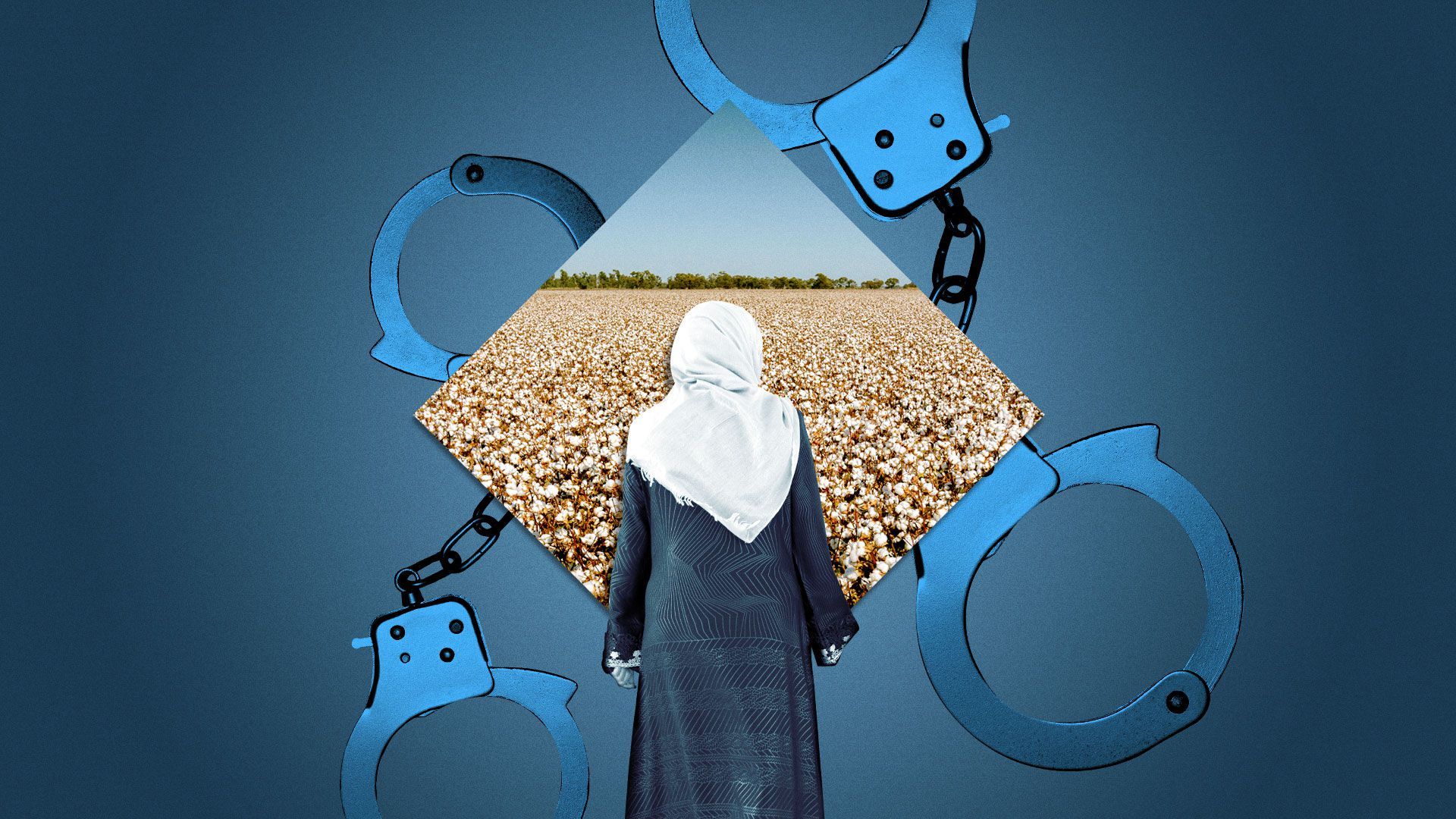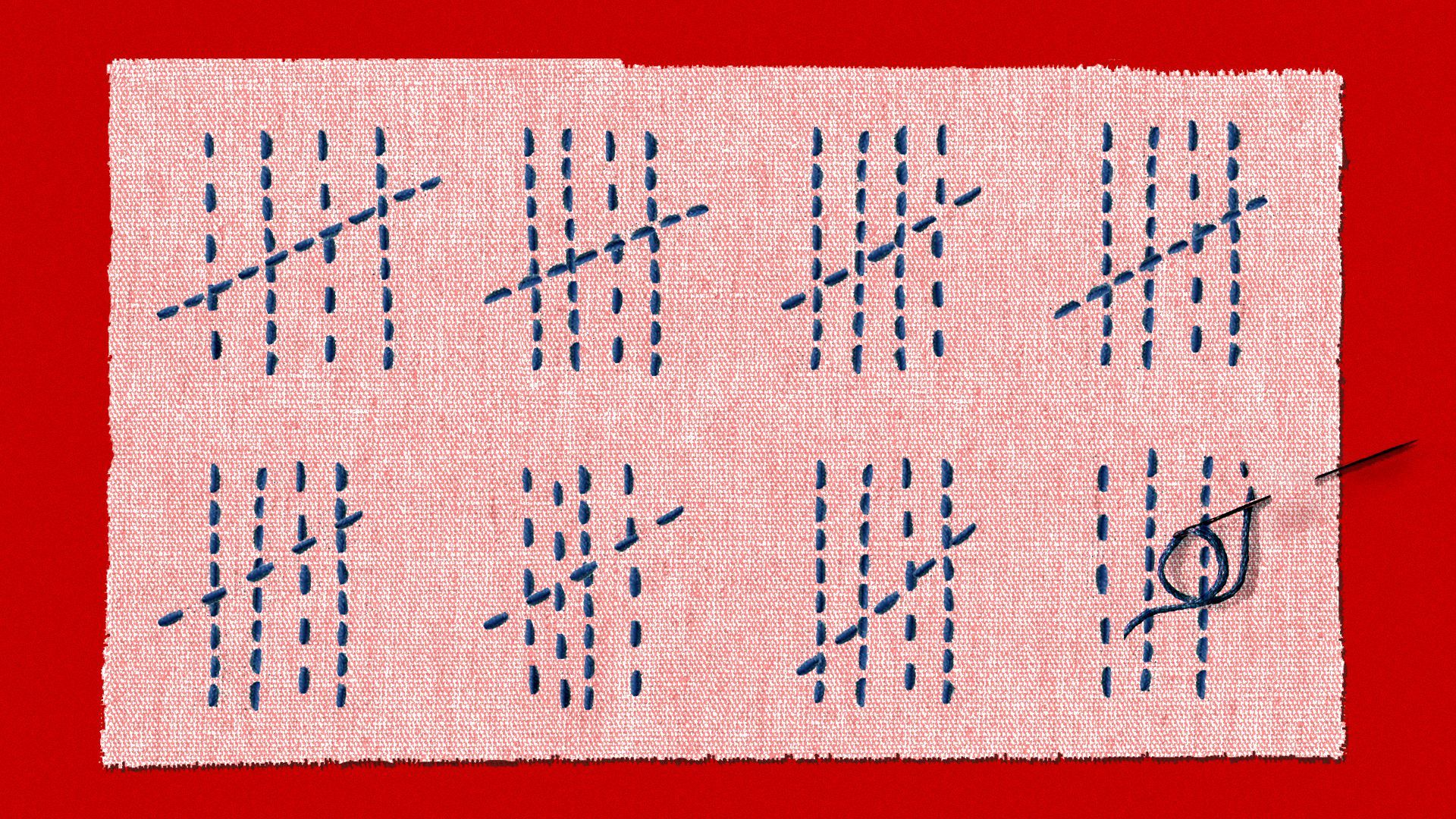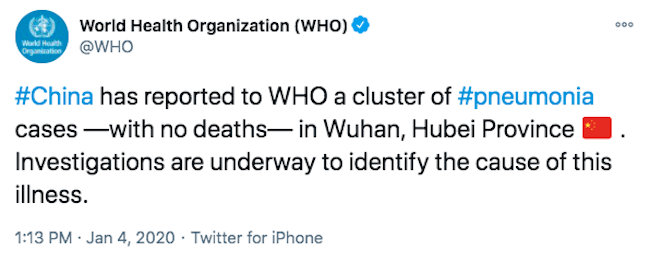January 05, 2021
Welcome back to Axios China. I hope everyone enjoyed the holidays. For the first Axios China edition of 2021, we've got a close look at forced labor in Xinjiang, how fair trade organizations struggled there, Chinese-made vaccines, and lots more.
- If you know someone who might be interested in reading Axios China, you can send them this link.
Today's newsletter is 1,470 words, a 5½-minute read.
1 big thing: The scope of forced labor in Xinjiang is bigger than we knew

Illustration: Eniola Odetunde/Axios
China has constructed a vast string of factories inside the walls of Xinjiang mass internment camps, and Chinese authorities are forcing thousands of Muslim minorities to work in cotton fields, according to two recent investigations.
Why it matters: Xinjiang products are deeply integrated into lucrative supply chains around the world. The Chinese Communist Party's official embrace of coerced labor will force Western governments and institutions to choose between pleasing business leaders or enforcing universal human rights values.
Details: In the past three years, the Chinese government has forced hundreds of thousands of Uighurs and other Muslim minorities in Xinjiang to perform seasonal labor in the region's cotton fields, according to a December investigation from the BBC.
- People are sent to the fields as part of a "labor transfer program," the BBC reports, drawing on Chinese government documents provided by Adrian Zenz, a leading expert on China's policies in Xinjiang.
- Beijing claims the programs alleviate poverty by providing well-paid employment for rural residents without a regular income.
- But researchers and rights groups say the labor transfer programs are part of the system of control, indoctrination and forced assimilation the Chinese government has deployed against Uighurs.
- Workers fear they will be sent to detention camps if they don't participate and are often underpaid.
A new report from BuzzFeed, based on satellite imagery, interviews and government documents, found more than 100 mass detention facilities in Xinjiang that together contain more than 21 million square feet of factory space.
- Researchers identified more than 1,500 companies located in or near these facilities, with dozens of the companies exporting products to countries around the world.
The global response: Forced labor goes against international human rights conventions, but so far the U.S. is the only geopolitical power that has responded with substantive action.
- The Trump administration last year sanctioned numerous Chinese officials and government bureaus deemed complicit in human rights violations in Xinjiang, including the Xinjiang Production and Construction Corps (XPCC), a quasi-military organization that owns vast swaths of farmland in Xinjiang and operates some mass internment camps.
- The Commerce Department added to an export blacklist numerous Chinese companies deemed complicit in Xinjiang repression.
- On Dec. 2, the U.S. blocked cotton imports associated with the XPCC.
But many feel pressure from China to avoid taking similar actions — a pressure that often manifests through economic ties.
- By his own admission, President Trump resisted most action on Xinjiang until the U.S.-China phase one trade deal negotiations were finished and an agreement signed, in order to avoid losing leverage.
- Despite its stated concern over forced labor, the EU just signed an investment agreement with China, with language that barely flicks at the massive violations in Xinjiang.
And some major companies, including Nike and Coca-Cola, have lobbied hard against a draft bill, the Uyghur Forced Labor Prevention Act, which aims to keep products made with forced labor out of the U.S.
- This draft bill would instead put the onus on companies to prove their supply chains aren't tainted by coerced labor.
The bottom line: New investigations are revealing the expanded scope and scale of China's forced labor policies in Xinjiang. But so far, governments and companies around the world continue to put profits first.
Go deeper: The U.S. has the tools to fight Uighur forced labor
2. Global textile watchdogs struggled in Xinjiang

Illustration: Annelise Capossela/Axios
The world learned of China's sweeping system of forced labor in the Xinjiang garment industry not through fair trade organizations but through independent researchers, journalists and the testimonies of former detainees.
Why it matters: This is just one symptom of a bigger problem — the failure of many international institutions and governments to forcefully push back against the Chinese Communist Party's human rights violations.
Global nonprofits dedicated to promoting ethical textile production were not among those to raise the early alarm about forced labor in Xinjiang's cotton fields.
- But the problem runs deeper. Just over a year ago, at least two textile and fiber watchdogs faced scrutiny for their links to the XPCC.
- Though the U.S. only sanctioned the XPCC in 2020, regional experts have known of its complicity in abusive farming practices for years.
Details: Until October 2019, the Better Cotton Initiative, a major international cotton sustainability organization, had an XPCC affiliate as one of its official implementing partners, according to an investigation by trade publication Apparel Insider.
- In March 2020, BCI suspended operations in Xinjiang, then in October, it announced it was pulling out of Xinjiang entirely.
- In a statement, BCI said it was enacting a policy of "responsible disengagement" after determining there was no way to engage ethically in Xinjiang.
Textile Exchange, a U.S.-based nonprofit promoting ethical textile production, also faced criticism after Apparel Insider revealed in December 2019 that the XPCC Cotton Association's director, YickChung Man, was a member of the Textile Exchange board.
- "It is reprehensible that a leading member of the XPCC would be given a leadership role in one of the organizations that sets the international standards for the global textile industry," Darren Byler, an expert on Uighur culture and society who teaches at the University of Washington, told Axios.
- Man is no longer listed as a board member. A statement on the Textile Exchange website says he has retired.
Context: In countries where forced labor is a major concern, there are often other systemic problems such as corruption, lack of transparency and weak rule of law that make enforcement of international labor standards difficult.
- That's why having domestic partners who are familiar with local conditions and who can help with onsite audits are vital to labor certification programs.
But China presents a unique problem. Local government partners may be complicit in the forced labor schemes, and individual officials who might personally object to such practices could face punishment for revealing details to outsiders.
- Extremely tight information control means local partners based in China but not in Xinjiang might not even be aware of what is happening.
- “The classic method for combating forced labor relies on careful audits of global supply chains," Adrian Zenz, a leading expert on forced labor in Xinjiang, wrote in Foreign Policy. "In Xinjiang, this approach runs into a severe limitation: Conducting such audits in the world’s most sophisticated digital police state is impossible.”
The bottom line: The textile industry hasn't stayed on top of the quick downward spiral in Xinjiang, says Zenz. And now they don't know how to extricate themselves.
Go deeper: Subsidiary of world's largest shirtmaker put on U.S. blacklist over Xinjiang ties
3. Catch up quick
1. A Chinese journalist who covered the early days of the coronavirus outbreak was sentenced to four years in prison, CNN reports.
2. China and the EU agreed to sign an investment deal, despite the incoming Biden administration's plea to EU leaders to consult with them first, NPR reports.
3. Congress approved funding for 3 new Coast Guard icebreakers, heeding calls to supplement the U.S. Arctic presence amid growing Chinese activity there, AP reports.
4. The Trump administration declassified uncorroborated intelligence indicating China offered bounties to attack American soldiers in Afghanistan. Go deeper.
4. Chinese and Russian vaccines go global


Health regulators in China approved the country's first homegrown COVID-19 vaccine, developed by the state-owned pharmaceutical company Sinopharm, for general use, Axios' Fadel Allassan reports.
Why it matters: China, which has suffered global damage to its reputation after its handling of the initial coronavirus outbreak in Wuhan, is eager to distribute the vaccine to countries that have not secured Pfizer or Moderna doses.
- The UAE, Bahrain, Pakistan and Morocco are among those slated to receive Sinopharm doses, while Turkey, Indonesia and Brazil have preordered a vaccine developed by another Chinese company called Sinovac Biotech.
- Some countries have also preordered Russia's Sputnik vaccine.
The state of play: Sinopharm's approval comes just after China started a program to vaccinate 50 million people before the Lunar New Year in February. 4.5 million doses of the shot have already been administered.
Details: Sinopharm announced Wednesday that preliminary data has shown the vaccine to be 79.3% effective, though experts have said important data is missing. The shot is under conditional approval by China, and the publication of more data will determine its effectiveness.
Go deeper: China's high-stakes vaccine moment
5. What I'm reading
Minority report: "Because there were cameras, I didn’t ask any questions" (ChinaFile)
- Through examining hundreds of pages of government documents, anthropologist Darren Byler reconstructs the total surveillance system now operational in one Xinjiang town.
- The system of checkpoints, facial recognition cameras, cellphone scans and other measures — once piecemeal — are now highly integrated, allowing Chinese authorities to track and restrict the movements of anyone they wish to target.
Motherland: Xi’s China crafts campaign to boost youth patriotism (Wall Street Journal)
- Since 2013, and especially in the past couple of years, the CCP has embarked on a sophisticated campaign of patriotic education and propaganda to ensure that young people have no love for Western values.
Nothing to see here: China clamps down in hidden hunt for coronavirus origins (AP)
- "More than a year since the first known person was infected with the coronavirus, an AP investigation shows the Chinese government is strictly controlling all research into its origins, clamping down on some while actively promoting fringe theories that it could have come from outside China."
6. 1 year ago

This tweet by the World Health Organization, announcing that China had reported to them a cluster of mysterious pneumonia cases, was posted on Jan. 4, 2020. What a year it's been since then.